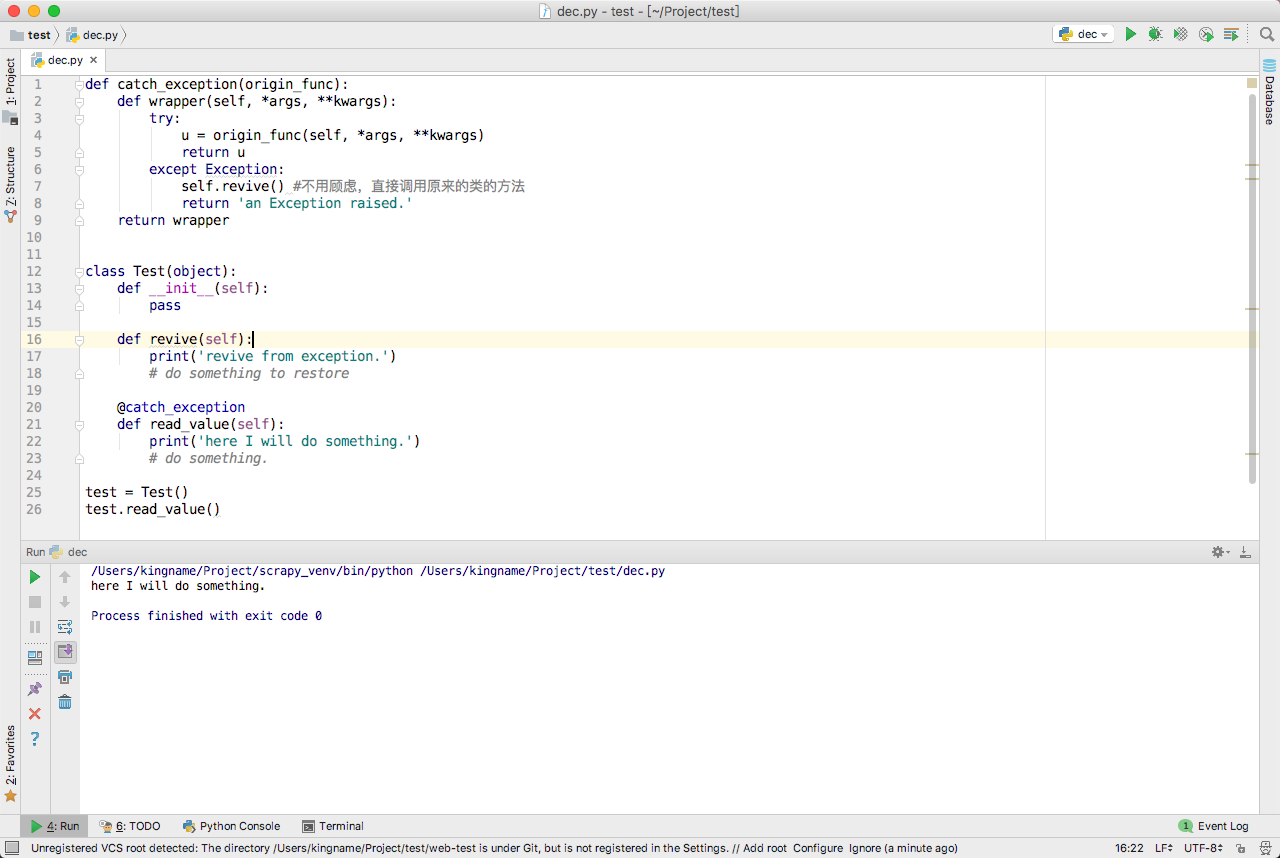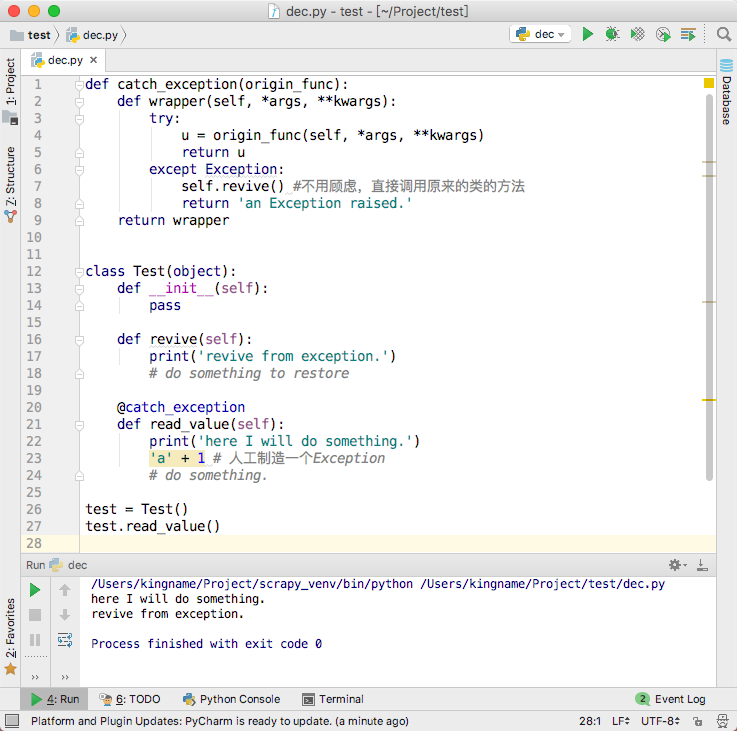目前在中文网上能搜索到的绝大部分关于装饰器的教程,都在讲如何装饰一个普通的函数。本文介绍如何使用Python的装饰器装饰一个类的方法,同时在装饰器函数中调用类里面的其他方法。本文以捕获一个方法的异常为例来进行说明。
有一个类Test, 它的结构如下:
1 2 3 4 5 6 7 8 9 10 11 class Test (object ): def __init__ (self ): pass def revive (self ): print ('revive from exception.' ) def read_value (self ): print ('here I will do something.' )
在类中有一个方法read_value(),这个方法在多个地方被调用。由于某些原因,方法read_value有可能随机抛出Exception导致程序崩溃。所以需要对整个方法做try ... except处理。最丑陋的做法如下面的代码所示:
1 2 3 4 5 6 7 8 9 10 11 12 13 14 15 16 class Test (object ): def __init__ (self ): pass def revive (self ): print ('revive from exception.' ) def read_value (self ): try : print ('here I will do something.' ) except Exception as e: print (f'exception {e} raised, parse exception.' ) self.revive()
这样写虽然可以解决问题,但是代码不Pythonic。
使用装饰器来解决这个问题,装饰器函数应该写在类里面还是类外面呢?答案是,写在类外面。那么既然写在类外面,如何调用这个类的其他方法呢?
首先写出一个最常见的处理异常的装饰器:
1 2 3 4 5 6 7 8 9 10 11 12 13 14 15 16 17 18 19 20 21 22 def catch_exception (origin_func ): def wrapper (*args, **kwargs ): try : u = origin_func(*args, **kwargs) return u except Exception: return 'an Exception raised.' return wrapper class Test (object ): def __init__ (self ): pass def revive (self ): print ('revive from exception.' ) @catch_exception def read_value (self ): print ('here I will do something.' )
这种写法,确实可以捕获到origin_func()的异常,但是如果在发生异常的时候,需要调用类里面的另一个方法来处理异常,这又应该怎么办?答案是给wrapper增加一个参数:self.
代码变为如下形式:
1 2 3 4 5 6 7 8 9 10 11 12 13 14 15 16 17 18 19 20 21 22 23 def catch_exception (origin_func ): def wrapper (self, *args, **kwargs ): try : u = origin_func(self, *args, **kwargs) return u except Exception: self.revive() return 'an Exception raised.' return wrapper class Test (object ): def __init__ (self ): pass def revive (self ): print ('revive from exception.' ) @catch_exception def read_value (self ): print ('here I will do something.' )
只需要修改装饰器定义 的部分,使用装饰器的地方完全不需要做修改。
下图为正常运行时的运行结果:
下图为发生异常以后捕获并处理异常:
通过添加一个self参数,类外面的装饰器就可以直接使用类里面的各种方法,也可以直接使用类的属性。

